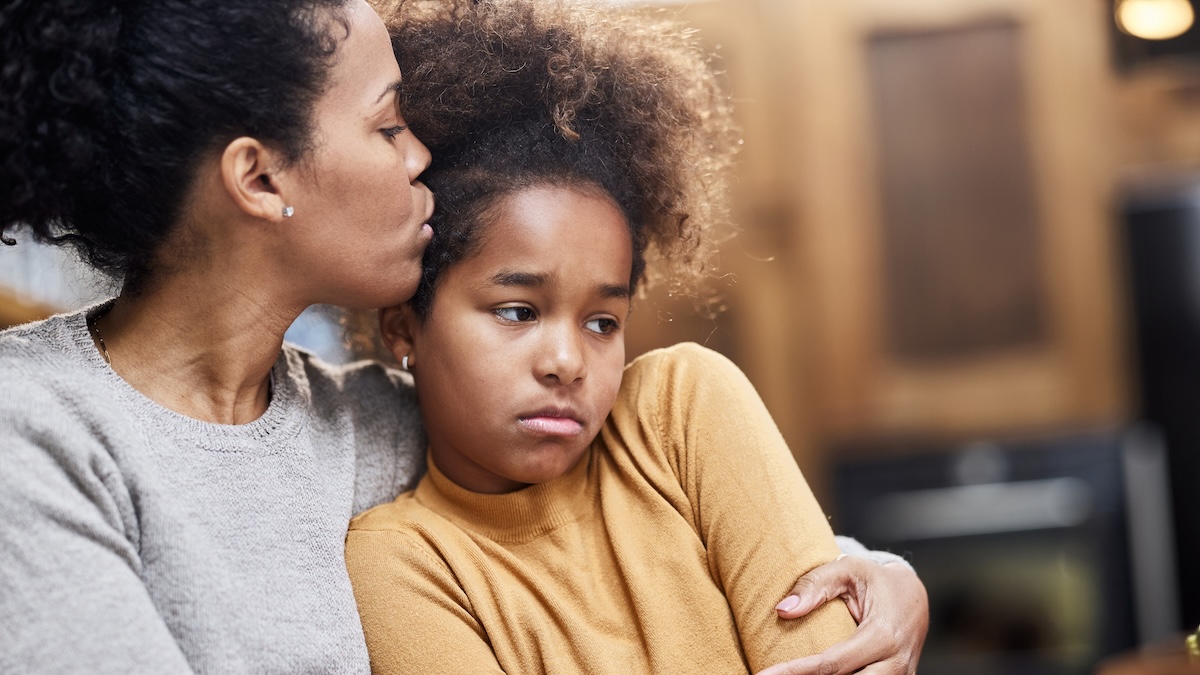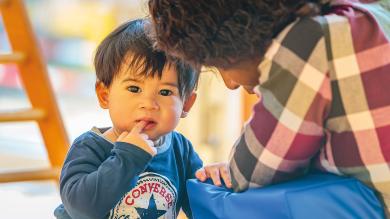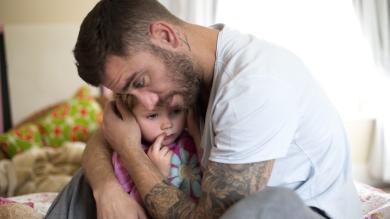
Mourning the loss of my beloved pet
For many people, pets are irreplaceable: as family members, emotional anchors and social bridge builders. When a dog or rabbit dies, it is important to grieve and take time to do so. Read what can help adults and children grieve for their beloved pet. Tips also for friends and relatives who want to support the grieving.
(Expert: Anna Kipp-Menke, systemic consultant | Editor: Sabrina Ludwig)
That's what it's all about:
The special relationship between people and pets
The desire to belong is a basic human need. We want to be liked for who we are and therefore desire relationships in which we can be ourselves.
Pets fulfill this need in a unique way. They love and accompany us unconditionally, accept us and accept us as we are. What's more, they show us anew every day just how valuable we are.
As part of the family or as a family substitute, we build up a deep, non-verbal relationship with them. Our dog comforts us when we are sad. Our cat snuggles up to us when we are exhausted.
"This deep connection, this love, makes the loss of a beloved pet a shattering experience that leaves a painful gap."
Anna Kipp-Menke, life situation coach, pme Familienservice
Take time to grieve for your pet
Loss, loneliness or stress have a direct impact on emotional well-being and, not least, on mental health. People who are grieving are often exhausted, less focused and more tense.
Be patient and, above all, loving with yourself if you are not functioning as usual in your everyday life, mastering your tasks at work or tackling your sport with vigor. Grieving takes time to process the loss well - and you should take this time.
The four stages of grief
The loss of a beloved animal triggers a grief that can be similar to that of a human being. The stages of grief developed by Verena Kast in the 1960s provide a valuable framework for this.
Grief phase 1: Despair, helplessness, helplessness
After the death of a beloved pet, it is often difficult to understand what has happened. Many people feel paralyzed or completely overwhelmed.
During this time, it is important to allow yourself to experience all your feelings - sadness, tears or even speechlessness are completely normal. Writing can help you to sort out your thoughts, or simply ask people you know to be with you.
Tip for friends and acquaintances:
Do not leave the grieving person alone and signal that all feelings are allowed. Take on small everyday tasks or offer practical help if things are getting too much. Just be there, listen and show compassion - without asking too many questions or giving advice.
Mourning phase 2: Emerging emotions
In the second phase, strong emotions often come up: anger, guilt, pain or fear. Perhaps thoughts such as "Could I have done more?" also arise. - This is all part of the process. These feelings should not be suppressed, but should be allowed and given space.
Tip for the environment:
Allow the grieving person to express their feelings and listen without judging them. Take feelings of guilt seriously, but don't try to talk them away. Your sympathy and patience will help more than well-intentioned solutions.
Mourning phase 3: Searching and separating
Many people intensely remember shared moments with their pet, talk to them in their mind or hold on to rituals - this is an important step on the path to processing. The search for closeness and holding on to memories is painful, but also very comforting.
Tip for friends and relatives:
Allow memories, even if stories are repeated. Show patience and do not urge them to "let go". Also provide cautious support for the first steps into everyday life or new routines.
Mourning phase 4: Acceptance and a new beginning
Over time, peace slowly returns. The animal remains alive in your heart and in your memories, even if life goes on. The view of life often changes and new plans become possible.
Tip for the environment:
Respect when the grieving person shows more independence again or changes. Also accept if your support is now less needed - this is a good sign.
Every grief is unique. Anyone who accompanies a person in their pet's grief needs empathy, openness and patience above all. Rituals or mementos can help to preserve the connection to the deceased animal.
The classification of the stages of grief is based on Verena Kast. You can find out more in our article: The four stages of grief
Maintaining an inner connection to the animal
Rituals, mementos or special places can help you keep the animal in your heart, find comfort and move on yourself. The animal can simply have a place in your heart, or you can preserve your memory through photos, a collar or special places such as a favorite spot on the balcony or in the garden.
Such personal rituals and objects help to maintain the bond with the animal and to process the grief.
This YouTube content can only be loaded if you accept the privacy policy of Google LLC.
To the data protection settings "
How to provide a friend/relative with good support when grieving for an animal
"Many pet owners have built up a deep relationship with their pet. That's why grieving the loss of a loyal companion can be a very difficult experience."
knows Anna Kipp-Menke. She works as a systemic consultant on the pme Familienservice's life situation hotline. As a dog owner herself, she knows very well how strong a relationship with a pet can be:
"Animals give us comfort and joy - we feel less lonely with them. We learn to understand them without words and become receptive to moods."
The pain is real and it usually helps grieving people if you treat them with compassion and respect their feelings, i.e. don't belittle or judge them.
Phrases such as "Be happy that you had her or him!" or: "Surely the rabbit wouldn't want you to suffer now" are good in your intention, but they make the mourner feel that your grief is not quite right and can be rather discouraging. It usually helps if you simply have an open ear and listen.
How you can help your child if they are grieving for their pet
Children's first contact with the subject of death is often when their own pet dies. This experience leaves its mark, but everyone deals with grief differently - and that's okay.
It is important that parents and close caregivers take the emotions of children and young people seriously and react sensitively when they are grieving or perhaps angry that their pet has died. Every emotion is allowed and should have its place.
If your child does not show any emotion, ask them how they are feeling. "Or offer your child help in expressing their feelings, depending on their age and stage of development," says Anna Kippe-Menke. "For example, ask your child: 'You're sad, aren't you? You're angry, aren't you?"
A cuddly toy that the child can tell their thoughts, feelings and worries to may also help. "Reading age-appropriate children's books about saying goodbye and grieving together can also make the situation easier for the child," advises Anna Kipp-Menke.
With this loving support, children can develop helpful skills that will help them to cope with grief and loss later in life.
A joint farewell, rituals such as funerals or lighting a candle in the evening can help in times of mourning and in coping with grief. Carefully selected mementos or jointly created photo albums can also be helpful.
With time and loving, patient support, most children regain stability and confidence. Those who feel that their individual needs are seen and taken seriously will find it easier to deal with the new situation and their grief.
Professional grief counseling is also available to help people come to terms with the loss of a loved one or animal and find their own way through grief. It offers a protected space in which feelings such as sadness, anger or guilt can be openly addressed. The needs and life situation of the grieving person are addressed individually.










